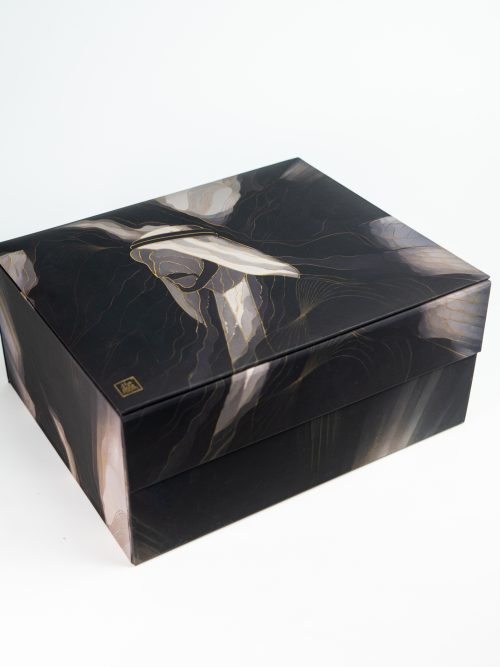Call us: 600-5-DATES
0.00
Free Shipping on All Orders Over $100
The best discounts this week
Every week you can find the best discounts here.
One of the most unusual and rewarding aspects of owning a Seeds of Heritage seedling is that it is not just a plant—it is a palm tree. Unlike other houseplants, a palm can live for over a century, meaning it may travel with you through different stages of life and even different countries. Moving your palm safely is essential to protecting both its health and the heritage it carries. This guide explains how to relocate your palm at home, across the city, or even abroad.
Preparing for the Move
Successful relocation starts with planning:
- Choose the right time. Cooler months or early mornings/evenings are best, avoiding extreme heat.
- Moisture balance. Water lightly the day before so the soil is slightly damp but not wet. Overwatering before moving can make the root ball unstable.
- Secure the fronds. Tie the fronds loosely with soft cloth or burlap to protect them from bending or snapping.
- Stabilize the pot. If moving by car, place the pot in a snug box with towels or padding so it doesn’t tip over.
Local Moves
When moving your palm to another room, house, or city within the UAE:
- Keep the root ball intact. Palms generate roots from a special initiation zone at their base—disturbing this can slow growth.
- Transport indoors. Use an air-conditioned car. Avoid open trucks where wind and sun can stress the fronds.
- Protect against spills. Cover the top of the pot with paper or cloth to prevent soil from spilling.
- After arrival. Place the palm back in bright, indirect light. Water only when the top 1–2 cm of soil is dry. Avoid fertilizing for the first 2–4 weeks while it settles.
Moving Abroad
Relocating a palm internationally requires more preparation but is absolutely possible. Every year, thousands of palms are shipped legally and safely around the world. Here is what you need to know:
Phytosanitary Certificate
To export a live plant from the UAE, you must obtain a phytosanitary certificate from the Ministry of Climate Change and Environment (MOCCAE). This document confirms the plant is free from pests and diseases. Most countries will not allow plant entry without it.
Import Requirements Abroad
- United States: Requires a phytosanitary certificate and most plants must arrive bare-root (no soil). The plant must be declared to customs on arrival and inspected by USDA APHIS.
- United Kingdom: Requires a phytosanitary certificate issued within 13 days of shipment and an inspection on arrival.
- European Union: Non-EU plants need a phytosanitary certificate and will undergo plant-health inspection at the border.
- Other countries: Rules vary; always check with the plant health authority in your destination before travel.
Some countries have extra restrictions on palms due to pests like the red palm weevil, making the paperwork and inspection step essential.
Preparing the Plant for Travel
- Bare-root where required. If your destination prohibits soil (as in the US), remove the seedling carefully from its pot and rinse the roots clean.
- Wrap roots properly. Cover them with moist (not wet) paper and then a breathable plastic sleeve to keep humidity.
- Protect the crown and fronds. Tie fronds loosely to prevent damage, but never bend or force them.
- Pack securely. Place the seedling in a ventilated box with padding around the root zone. Label the package with the plant’s scientific name (Phoenix dactylifera) and mark it as a live plant.
- Keep documents handy. Carry your phytosanitary certificate and any import permits with you for inspection.
At Arrival
- Declare the plant. Always tell customs officers you are carrying a live palm.
- Allow inspection. Officials will verify the certificate and examine the plant.
- Re-pot promptly. Once cleared, plant the palm in a well-draining soil and sand mix, water to settle the roots, and place it in bright, indirect light. Avoid fertilizer for 4–6 weeks until it has re-established.
Common Mistakes to Avoid
- Bringing soil into countries where it is prohibited—this is the number one cause of confiscation.
- Skipping paperwork or inspections—without proper certification, most plants will be refused entry.
- Leaving the plant in extreme heat or cold—even short exposure in a hot car can harm the roots.
- Handling roots roughly—palms do not tolerate root disturbance well; always keep the root ball intact unless bare-rooting is required.
Reassurance: Your Palm Can Travel
Owning a palm tree at home is unusual and extraordinary, but it should not be intimidating. Palms are slow-growing, hardy plants that adapt well to relocation when handled correctly. Whether you are moving across town or across the world, the combination of careful packing, proper documentation, and a little patience ensures that your Seeds of Heritage seedling can continue its journey with you.
When you nurture your palm in a new place, you carry not only a plant but also a piece of the UAE’s heritage—living proof that tradition and care can travel anywhere.










